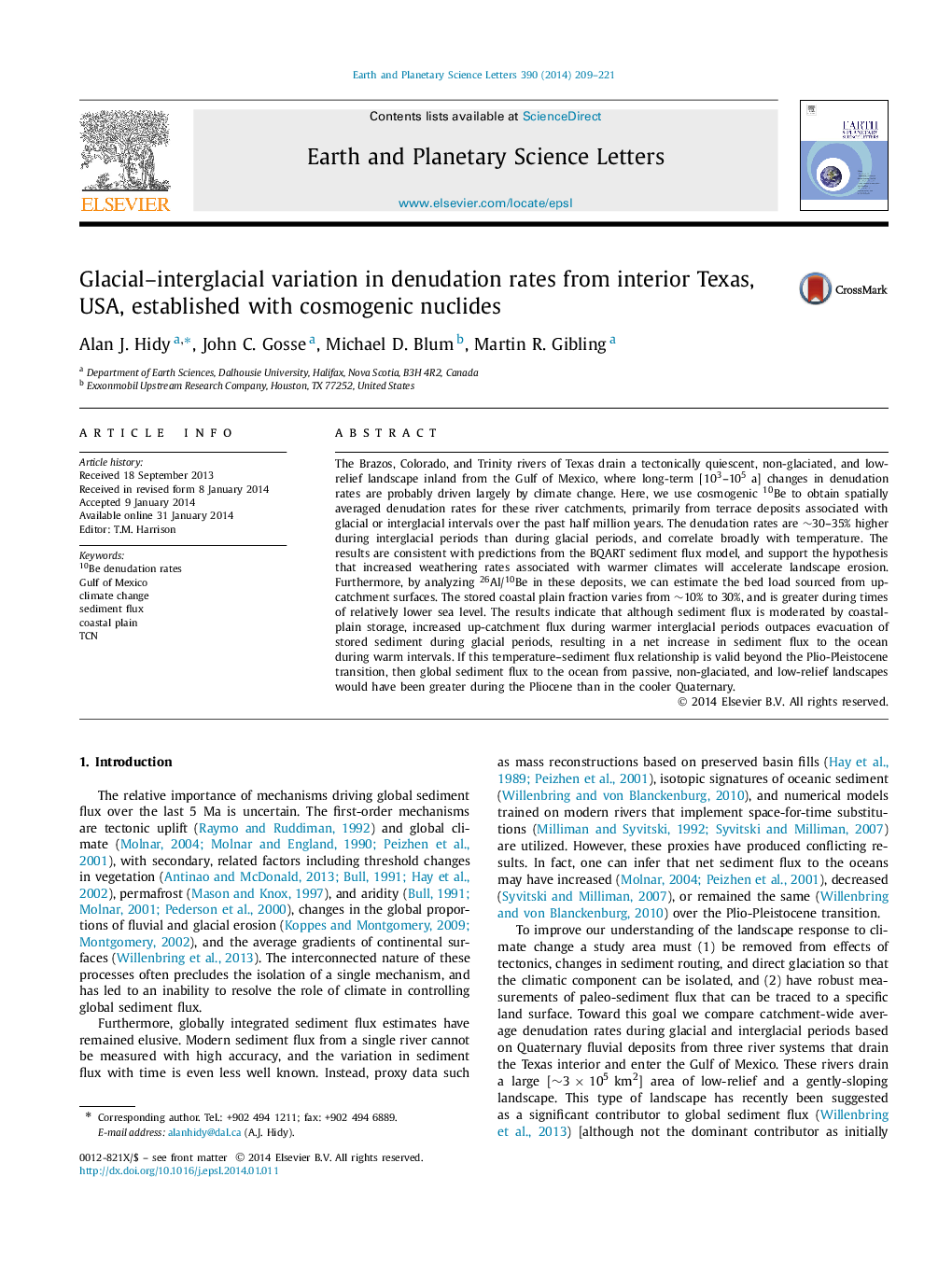| کد مقاله | کد نشریه | سال انتشار | مقاله انگلیسی | نسخه تمام متن |
|---|---|---|---|---|
| 6429602 | 1634766 | 2014 | 13 صفحه PDF | دانلود رایگان |

- A glacial and interglacial 10Be denudation rate record from multiple catchments.
- Non-glaciated, low-relief landscape denudation rates are found to be greater during warm periods.
- Enhanced evacuation of stored coastal plain sediments is linked to lower sea level.
- Damming obscures 10Be denudation rate measurements over decadal timescales.
- First absolute ages for the Lissie Formation using TCN and OSL chronology.
The Brazos, Colorado, and Trinity rivers of Texas drain a tectonically quiescent, non-glaciated, and low-relief landscape inland from the Gulf of Mexico, where long-term [103-105 a] changes in denudation rates are probably driven largely by climate change. Here, we use cosmogenic 10Be to obtain spatially averaged denudation rates for these river catchments, primarily from terrace deposits associated with glacial or interglacial intervals over the past half million years. The denudation rates are â¼30-35% higher during interglacial periods than during glacial periods, and correlate broadly with temperature. The results are consistent with predictions from the BQART sediment flux model, and support the hypothesis that increased weathering rates associated with warmer climates will accelerate landscape erosion. Furthermore, by analyzing 26Al/10Be in these deposits, we can estimate the bed load sourced from up-catchment surfaces. The stored coastal plain fraction varies from â¼10% to 30%, and is greater during times of relatively lower sea level. The results indicate that although sediment flux is moderated by coastal-plain storage, increased up-catchment flux during warmer interglacial periods outpaces evacuation of stored sediment during glacial periods, resulting in a net increase in sediment flux to the ocean during warm intervals. If this temperature-sediment flux relationship is valid beyond the Plio-Pleistocene transition, then global sediment flux to the ocean from passive, non-glaciated, and low-relief landscapes would have been greater during the Pliocene than in the cooler Quaternary.
Journal: Earth and Planetary Science Letters - Volume 390, 15 March 2014, Pages 209-221